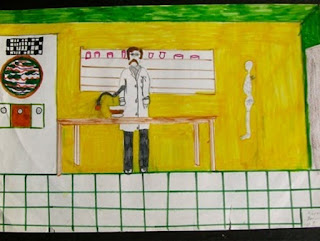Most people think ‘man’ when they think ‘scientist’ – how can we kill the stereotype?
Children learn to associate science with men at early ages. Over 40 years ago, less than 1% of American and Canadian elementary school children drew a woman when asked to draw a scientist. My latest research, published in Journal of Educational Psychology, shows that gender-science stereotypes persist even now, worldwide.
Using data from nearly 350,000 people in 66 nations, my colleagues and I found that these stereotypes prevail even in supposedly “gender-equal” nations like Norway and Sweden. These stereotypes matter because they can cause actions such as comments that overlook female scientists and hiring biases that favor men in some contexts.
Identifying the extent of the issue is one thing. It is another matter to learn how to change these beliefs so they reflect the diversity of actual scientists – and the children of both sexes who hope to grow up to join them.
More women, weaker stereotypes
The good news is that gender-science stereotypes were weaker in nations with more women in science. Nations with more female science majors, for instance, had weaker gender-science stereotypes on both “explicit” and “implicit” measures.
My website has an interactive table with rankings for all nations. For implicit stereotypes, the US ranked in the middle at number 38 out of 66 nations, for instance. The UK was close by at number 33, while Australia was number 28, meaning implicit stereotypes associating science with men were stronger there.
Out of all 66 nations, the Netherlands had the strongest explicit stereotypes and second strongest implicit stereotypes. For instance, 89% of Dutch subjects implicitly associated science with men more than women.
Simone Buitendijk, vice-rector at Leiden University in the Netherlands and a gender equity scholar, told me that she is not surprised, but nevertheless deeply concerned. “It is very much part of Dutch culture to see men as breadwinners and women as caretakers first,” she said.
The strong Dutch stereotypes reflect the male dominance in science there. Dutch men outnumber Dutch women by roughly 4:1 among science majors, for instance. “It will take a concerted effort by government, funding agencies and university leaders to change the situation,” Buitendijk argued.
Curt Rice, head of Norway’s Committee on Gender Balance and Diversity in Research, told me how these international findings relate to a “gender equality paradox” sometimes discussed in Scandinavia. On one hand, Scandinavian nations have small gender gaps in labor force participation rates. “But we have tremendous sex-based segregation in the careers,” he said.
Dispelling stereotypes – or reinforcing?
Highlighting examples of female scientists might help to weaken these pervasive stereotypes. For instance, in Norway, Rice plans to advance initiatives that enhance the visibility of female science professors through his upcoming role as President of the Oslo and Akershus University College of Applied Sciences.
Empirical data, however, suggest that female professors often have limited effects on students’ gender-science stereotypes. “Simply taking a college mathematics course from female instructors is generally not sufficient to change stereotypes,” notes my co-author Alice Eagly, a professor of psychology at Northwestern University.
According to one study, taking chemistry and engineering courses from female versus male professors can even strengthen gender-science stereotypes if students do not identify with the professors.
Related research suggests that the attitudes and messages that teachers convey can be more important than the teachers’ gender. In one study, for instance, kindergarten girls endorsed gender-math stereotypes if their female teacher was anxious about mathematics.
Read all articles from this link https://theconversation.com/most-people-think-man-when-they-think-scientist-how-can-we-kill-the-stereotype-42393
